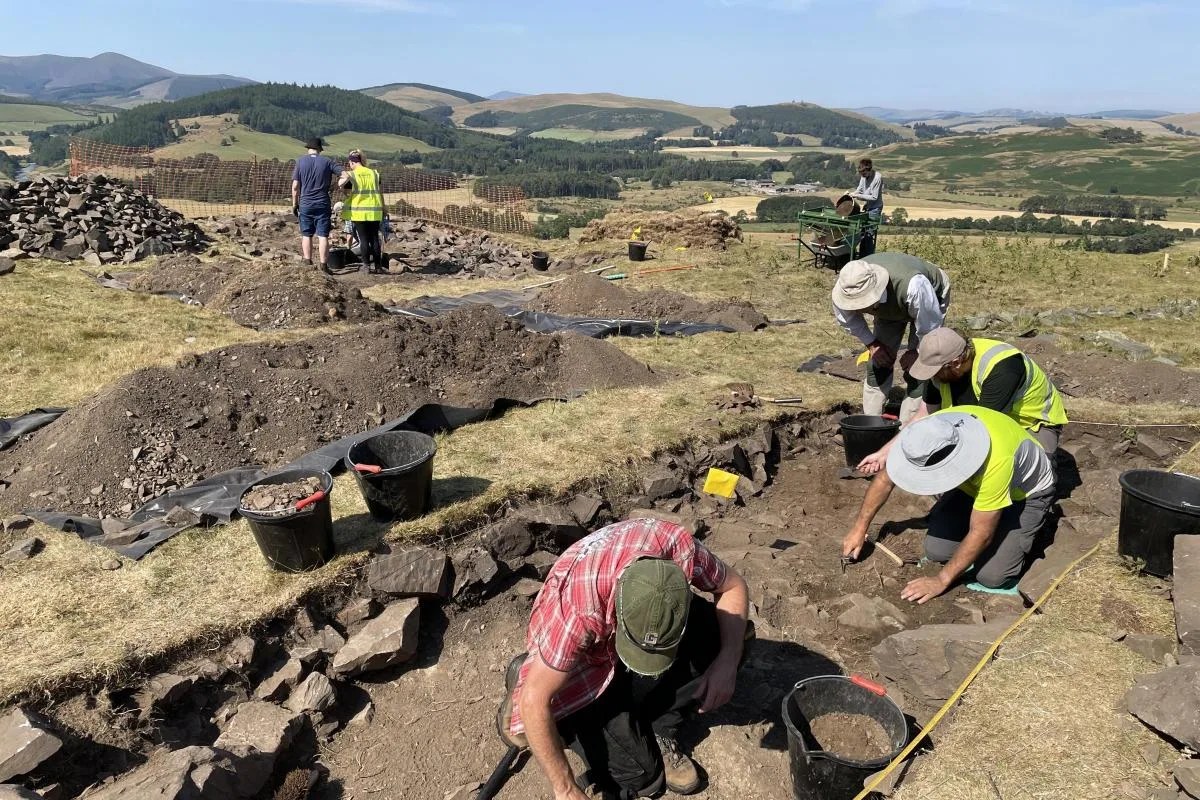A team of archaeologists has uncovered new evidence that may illuminate the origins of the legendary figure Merlin, revealing unexpected connections to the Scottish Borders. The small village of Drumelzier has long been entwined with the myth of Merlin, who is said to have been imprisoned and buried along the River Tweed in the 7th century. This association is drawn from the Vita Merlini Sylvestris ("The Life of Merlin of the Forest"), a medieval manuscript housed in the British Library.
In 2022, GUARD Archaeology, leading a group of volunteers from across Scotland, initiated a detailed investigation into the archaeological basis of this legend. Their recently published findings suggest there could be a grain of truth to the tales of Merlin’s death in Scotland.
A geophysical survey identified a feature resembling a grave near the reputed site of Merlin's Grave in Drumelzier. Moreover, excavations at Tinnis Fort, which overlooks this location, revealed that the hillfort was occupied during the late 6th and early 7th centuries—precisely when the Merlin story is set. This fort, according to the archaeologists, exhibits the characteristics of a significant stronghold from that era.
“The Drumelzier legend is rich with pre-Christian customs, ancient Cumbric names, and connections to local sites, which archaeology now shows could have inspired the story,” said Ronan Toolis, CEO of GUARD Archaeology. He emphasized the striking coincidence that this particular hillfort, unlike many older Iron Age settlements in the area, dates back to the time of Merlin’s legend, suggesting that the story likely originated locally rather than being imported by wandering storytellers.
The local tale of Merlin, however, diverges significantly from the popular image of him as a wise advisor to King Arthur. The Drumelzier legend portrays Merlin as a tragic, somewhat pathetic figure, prone to spouting confusing riddles and prophecies, imprisoned by a minor tyrant before meeting a grim end—victimized by royal scheming.
Further investigations across the Tweed at the Thirlestane Barrows revealed a square barrow from the late 3rd to late 6th centuries AD, likely marking the graves of two elite individuals. Additionally, flint fragments dating back to the Late Mesolithic or early Neolithic periods were discovered at the summit of Tinnis Hill, hinting at human activity long before Merlin’s time.
Toolis reflected on the enduring nature of these stories, suggesting that the monuments of the past, such as the Thirlestane Barrows, held significant meaning in the landscape, influencing local folklore over millennia. “The ancient inhabitants of Tweeddale were undoubtedly aware of the history beneath their feet,” he noted, “and through local tales, they preserved the memory of those who came before them.”







